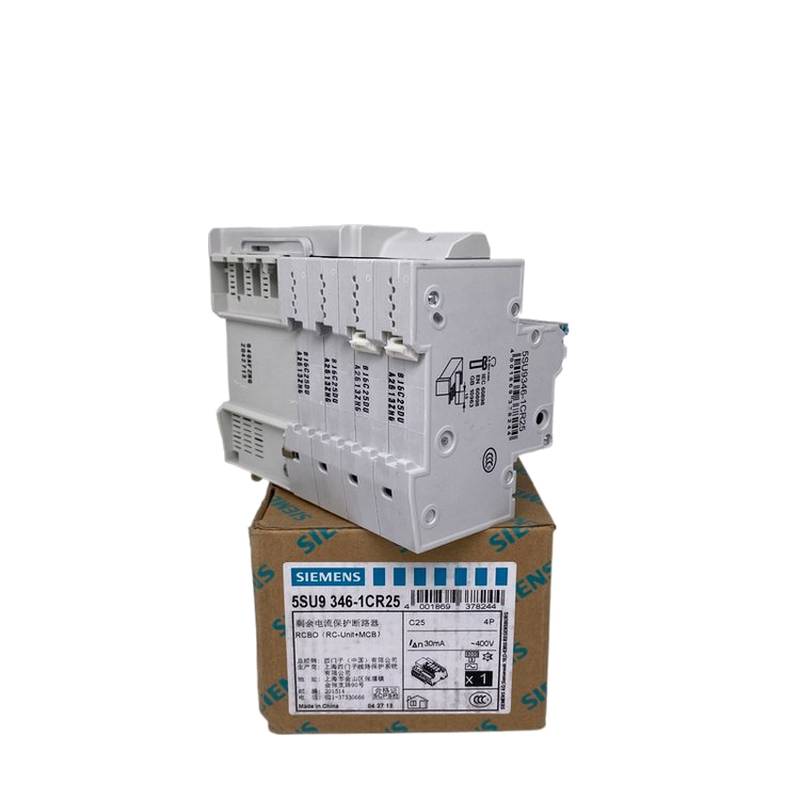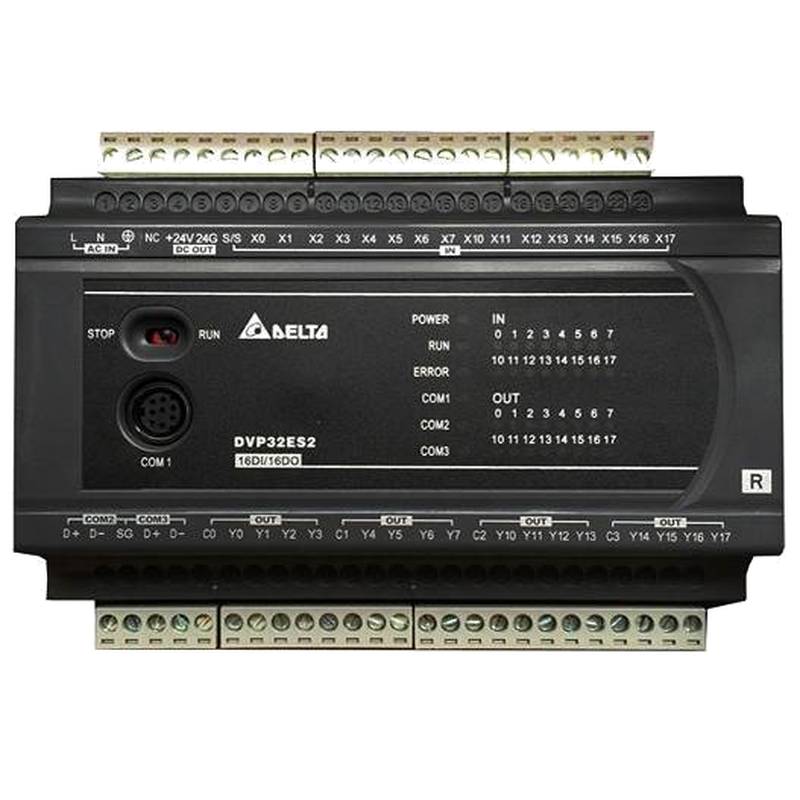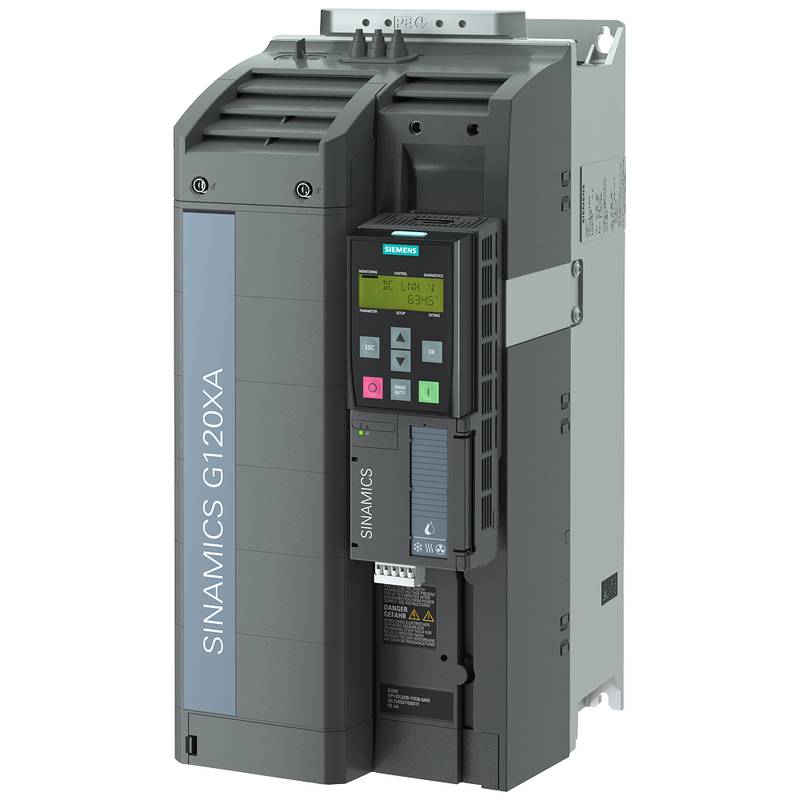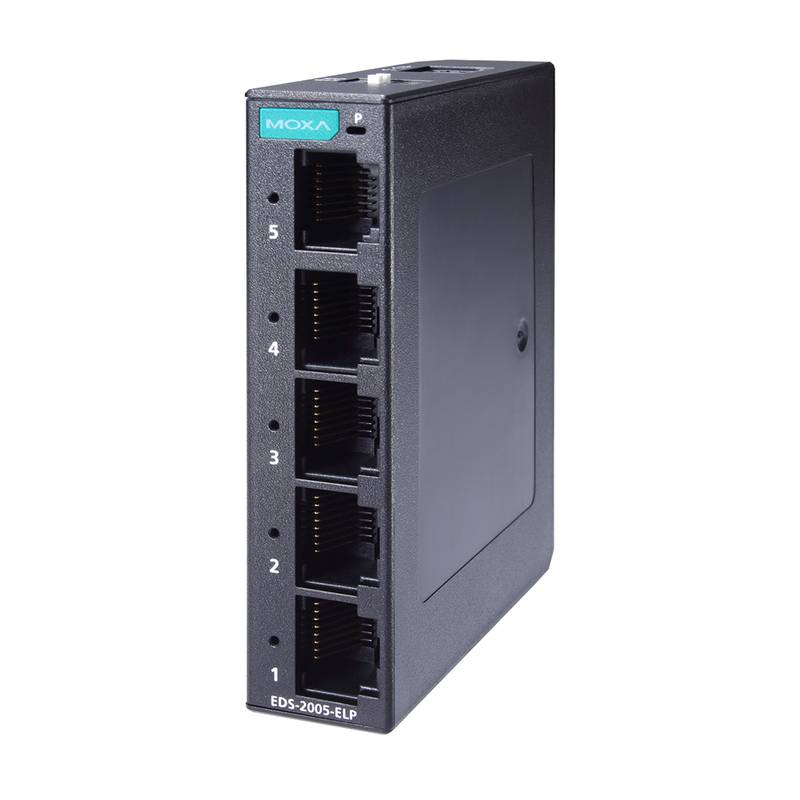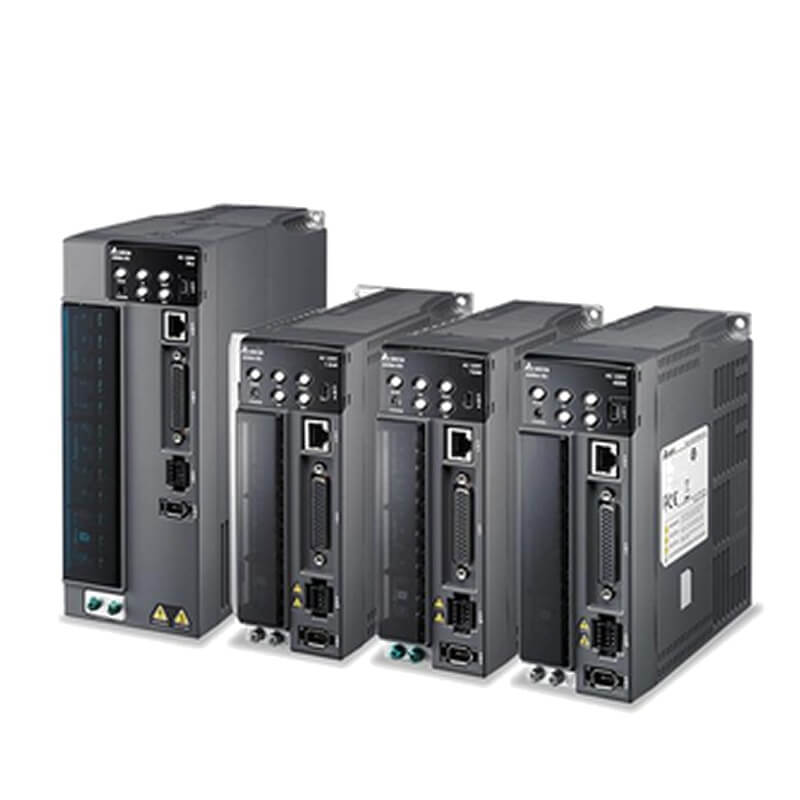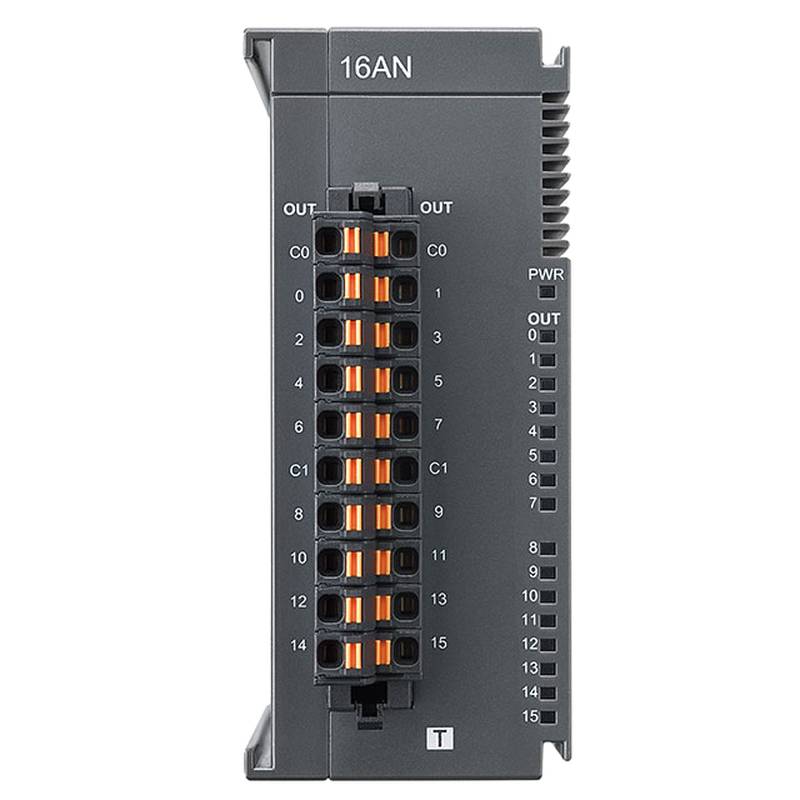
The Siemens 5SU9346-1CN20 is a robust 4-pole, 20A, 30mA Residual Current Circuit Breaker with Overcurrent Protection (RCBO) designed for reliable electrical safety in demanding industrial and commercial environments. This device offers simultaneous protection against overcurrents (short circuit and overload) and residual currents, preventing electric shocks and fires. Its compact design, C-curve tripping characteristic for inductive loads, and high breaking capacity make it a versatile and essential component for modern electrical distribution systems.
Product Specifications
| Feature | Specification |
| :---------------------- | :------------------------------------------- |
| Product Type | RCBO (Residual Current Circuit Breaker with Overcurrent Protection) |
| Manufacturer | Siemens |
| Model Number | 5SU9346-1CN20 |
| Poles | 4 |
| Rated Current (In) | 20 A |
| Rated Residual Current (IΔn) | 30 mA |
| Tripping Characteristic | Type C |
| Rated Voltage (Un) | 400 V AC |
| Rated Breaking Capacity (Icn) | 10 kA |
| Frequency | 50/60 Hz |
| Terminal Type | Screw Terminals |
| Mounting Type | DIN Rail |
| Degree of Protection | IP20 (enclosure) |
| Ambient Temperature | -25 to +45 °C |
Core Features & Market Positioning
The Siemens 5SU9346-1CN20 stands out in the electrical protection market due to its high integration, combining the functions of a circuit breaker and a residual current device in a single unit. This reduces panel space and installation complexity, a significant advantage in space-constrained industrial settings. The C-curve tripping characteristic is specifically engineered to handle the inrush currents common with inductive loads, such as motors and transformers, without nuisance tripping. This feature positions the 5SU9346-1CN20 as a premium choice for applications where reliable power continuity is paramount, alongside robust safety. Its compatibility with other Siemens SENTRON components further enhances its market appeal for those invested in the Siemens ecosystem.
Key Application Scenarios
This 4-pole RCBO is ideally suited for protecting electrical circuits in industrial facilities, commercial buildings, and machinery where both overcurrent and earth leakage faults pose significant risks. Common applications include the protection of motor control circuits, lighting circuits with high inductive loads, and power distribution boards in manufacturing plants. Its 30mA sensitivity makes it effective for personnel protection against indirect contact in areas with increased electrical hazard. The 20A rating and 10kA breaking capacity are appropriate for circuits supplying moderate power loads, ensuring comprehensive safety without compromising operational efficiency.
Practical System Integration Guidance
Integrating the Siemens 5SU9346-1CN20 into existing or new electrical systems is straightforward due to its standard DIN rail mounting and accessible screw terminals. Proper wiring is crucial: the line conductors should be connected to the top terminals, and the load conductors to the bottom terminals. For 4-pole applications, all three phases and the neutral conductor are switched and protected. Ensure that the incoming supply voltage does not exceed the rated voltage of 400V AC. Before commissioning, it is advisable to perform a functional test of the residual current tripping function using the integrated test button. Always ensure that the connected circuit's rated current and breaking capacity are within the limits of the RCBO to prevent premature failure.
Operation and Risk Mitigation
The primary function of the Siemens 5SU9346-1CN20 is to provide dual protection. Overloads, indicated by a gradual increase in current above the rated 20A, and short circuits, characterized by a sudden, massive current surge, are detected by the thermal and magnetic tripping mechanisms, respectively. Simultaneously, the residual current function monitors for imbalances between the live and neutral conductors. If a leakage current exceeding 30mA flows to earth, indicating a potential shock hazard or insulation fault, the RCBO will trip rapidly. Risk mitigation is enhanced by the clear indication of the tripping status via the toggle lever position. Regular testing using the built-in test button (typically monthly) is essential to ensure the residual current sensing mechanism remains operational and to prevent equipment damage and personnel injury.
Scalability & Long-Term Value
The Siemens 5SU9346-1CN20 is designed for integration within Siemens' comprehensive SENTRON modular system, offering excellent scalability. This compatibility allows for seamless expansion of protection and distribution capabilities by adding other devices like surge protective devices, miniature circuit breakers, and contactors onto the same DIN rail. For facilities moving towards digital integration, Siemens' broader portfolio of smart meters and communication modules can be interfaced with distribution boards where the 5SU9346-1CN20 is installed, enabling remote monitoring and data analysis for predictive maintenance and energy management, thereby increasing long-term operational value and system intelligence.
Frequently Asked Questions
What is the main purpose of the Siemens 5SU9346-1CN20 RCBO?
This device provides combined protection against overcurrents and earth leakage faults. It safeguards electrical installations from damage caused by overloads and short circuits. It also protects people from dangerous electric shocks.
The residual current protection function is crucial for detecting leakage currents to earth. A 30mA sensitivity is ideal for personnel protection. The C-curve ensures it handles inductive loads without nuisance tripping.
By integrating two protective functions into one unit, it saves space in electrical panels and simplifies wiring. This makes it a cost-effective and efficient solution for various industrial and commercial applications.
How do I correctly wire the Siemens 5SU9346-1CN20?
Always connect the incoming power supply to the top terminals and the outgoing load to the bottom terminals. Ensure all four poles (three phases and neutral) are connected according to the circuit diagram. Verify the supply voltage matches the device's rated voltage of 400V AC.
For proper operation, the neutral conductor must be connected to the neutral terminal of the RCBO. The device must be properly grounded for its protective functions to be effective. Double-check all connections for tightness before energizing the circuit.
Refer to the specific wiring diagrams provided by Siemens for your application. Incorrect wiring can lead to malfunction, damage to the device, or a safety hazard. Always de-energize the circuit before commencing any wiring work.
What does the 'C' in C-curve signify for this RCBO?
The 'C' designation refers to the tripping characteristic of the overcurrent protection. A Type C breaker is designed to trip when the current reaches 5 to 10 times the rated current (20A in this case). This characteristic makes it suitable for circuits with moderate inrush currents.
Applications involving inductive loads, such as motors, transformers, or fluorescent lighting, often experience temporary current surges upon startup. The C-curve allows for these inrush currents without causing unwanted tripping. This ensures system stability and avoids interruptions to normal operation.
In contrast, a Type B curve trips at lower multiples of rated current, suitable for purely resistive loads. A Type D curve is for very high inrush currents, like those from large transformers or welding equipment. The 5SU9346-1CN20's C-curve balances sensitivity with immunity to transient surges.
Can the Siemens 5SU9346-1CN20 protect against all types of electrical faults?
This RCBO effectively protects against overloads, short circuits, and earth leakage faults. Overloads occur when current exceeds the rated value for an extended period. Short circuits are sudden, high-magnitude current flows.
Earth leakage faults are detected by the residual current sensing, which trips the breaker if current flows unexpectedly to ground. This is crucial for preventing electric shock. However, it does not protect against overvoltage surges from external sources like lightning unless combined with a surge protective device.
While it offers comprehensive protection for circuits and personnel, it's important to understand its limitations. For complete system protection, it may need to be part of a broader strategy including surge protection and proper grounding.
What is the breaking capacity (Icn) of the 5SU9346-1CN20 and why is it important?
The 5SU9346-1CN20 has a rated breaking capacity (Icn) of 10 kA. This indicates the maximum fault current the device can safely interrupt without being destroyed. It's a critical safety parameter for ensuring reliable protection during a short circuit.
If a short circuit occurs that exceeds the RCBO's breaking capacity, the device could fail catastrophically, potentially causing a fire or further damage. Therefore, it's essential to install RCBOs with an Icn rating higher than the maximum prospective fault current at the point of installation.
Ensuring the breaking capacity is correctly matched to the electrical system's fault level is a fundamental aspect of electrical design and safety. This specification guarantees the device will perform as intended during a fault event, protecting the circuit and downstream equipment.
How often should I test the residual current function of this RCBO?
It is recommended to test the residual current function of the Siemens 5SU9346-1CN20 monthly. This ensures the sensitive earth leakage detection mechanism is functioning correctly. Regular testing is a critical safety practice.
To perform the test, simply press the "T" (Test) button on the front of the device. This simulates an earth leakage fault and should cause the RCBO to trip, disconnecting the power. If it does not trip, the device may be faulty and requires replacement.
Consistent testing is vital for maintaining effective protection against electric shock. Consult the product manual or local electrical codes for specific testing frequencies and procedures recommended for your installation environment.
What is the significance of the 30mA residual current rating?
The 30mA (milliampere) residual current rating is the threshold at which the device will trip to protect against electric shock. This level of current is generally considered the maximum that a person can experience without serious harm or fatality. It is a key safety feature for personnel protection.
When current leaks to earth, such as through a person touching a faulty appliance, this imbalance is detected by the RCBO. If the leakage current exceeds 30mA, the RCBO disconnects the power very rapidly, typically within milliseconds, before significant injury can occur.
This 30mA rating is standard for residual current devices used for supplementary protection against electric shock in most residential, commercial, and industrial settings. Higher rated residual current devices (e.g., 100mA or 300mA) are typically used for fire protection or main circuit protection where nuisance tripping is a concern.
Can this RCBO be used for both industrial and residential applications?
Yes, the Siemens 5SU9346-1CN20, with its 4-pole configuration, 20A rating, and 30mA sensitivity, is well-suited for demanding industrial applications and can also be used in certain residential contexts where higher levels of protection are desired or required. Its robust construction and C-curve tripping characteristic are particularly beneficial for industrial machinery and circuits with inductive loads.
In industrial settings, it's commonly used for motor protection, control circuits, and general power distribution. In residential applications, it can provide enhanced safety for circuits supplying appliances with motors, such as washing machines or air conditioners, or for circuits in areas with increased risk of electric shock.
However, for standard residential circuits without significant inductive loads, a 2-pole RCBO with a Type B curve might be more typical. The 4-pole configuration is usually for three-phase applications, which are less common in standard homes but prevalent in larger residential complexes or individual dwellings with specific three-phase power needs.
What is the ambient operating temperature range for this Siemens RCBO?
The Siemens 5SU9346-1CN20 is designed to operate reliably within an ambient temperature range of -25°C to +45°C. This broad range ensures its functionality in various environmental conditions encountered in industrial and commercial installations, from cold storage facilities to warmer climates.
Operating the device outside of this specified temperature range can affect its performance and lifespan. Extreme cold can impact the mechanical components, while excessive heat can lead to premature tripping or damage to the internal electronic and thermal elements.
It is crucial to ensure that the electrical enclosure housing the RCBO is adequately ventilated to maintain temperatures within the specified limits, especially in densely populated panels or areas with high ambient temperatures.
What does the 4-pole configuration offer over a 2-pole RCBO?
A 4-pole RCBO, like the Siemens 5SU9346-1CN20, is designed for three-phase power systems (L1, L2, L3) plus a neutral conductor (N). It provides simultaneous switching and protection for all four conductors, ensuring that in the event of a fault, all active conductors are disconnected. This is essential for safety in three-phase installations.
In contrast, a 2-pole RCBO typically protects a single-phase line and neutral conductor. For three-phase applications requiring residual current protection on each phase, either three individual 2-pole RCBOs (one for each phase-neutral circuit) or a single 4-pole RCBO is required. The 4-pole version simplifies wiring and ensures coordinated tripping across all phases and the neutral.
The 4-pole configuration is standard for the complete disconnection of three-phase loads and circuits from the supply, offering a higher level of safety and compliance for systems where the neutral conductor carries current under normal operation and must be switched.














